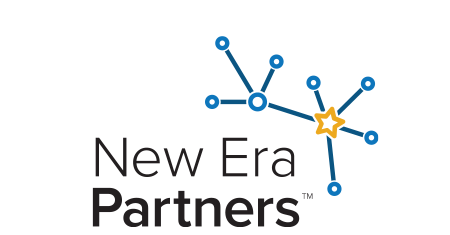FSMA Rule 204 FAQ
A common question we get from clients is, “What is the difference between a lot code and a traceability lot code?” When the FDA finalized its Food Traceability Rule (FSMA 204), it introduced the term “traceability lot code,” or TLC for short, which has caused confusion in the industry. Our clients are often unsure what defines a TLC and distinguishes it from a lot code. In this article, we will explain the differences, but first, it’s important to understand why traceability lot codes are so important to FSMA 204.
The FDA states that lot-level traceability for foods is critical for determining if contamination found in one package could be present in other packages from the same traceability lot, or other lots from the same traceability lot code source. Being able to trace food rapidly through the supply chain from food retailers and restaurants is a “key purpose” of FSMA 204, and FDA asserts that having access to the traceability lot code for a food is crucial for achieving this. Ultimately, the ability to trace down to the lot level will help prevent or mitigate foodborne illness outbreaks.1
Knowing this important context, let’s talk about the definition of a traceability lot code.
What Is a Traceability Lot Code?
First, let’s examine the FDA’s definition: “Traceability lot code (TLC) means a descriptor, often alphanumeric, used to uniquely identify a traceability lot within the records of the firm that assigned the traceability lot code.”2 This definition is a little vague and requires us to define a “traceability lot.”
Lots vs. Traceability Lots
The FDA defines “traceability lot” as “a batch or lot of food that has been initially packed…received by the first land-based receiver…or transformed.”1 Note that this definition specifically mentions three of the Critical Tracking Events (CTEs) outlined in the rule, but does not give much detail beyond that. In the comments and responses section of the final rule, the FDA noted that it is “providing flexibility for the industry to determine how to create traceability lots in a way that work best for their operations” and it wants the terminology “to communicate that the traceability lot code is assigned to a specific lot (i.e., the traceability lot) of the food.”1
The difference between the industry’s current understanding of a “lot” and the FDA’s definition of a “traceability lot” is therefore centered on these Critical Tracking Events. The FDA wants the industry to go beyond lot assignment for the sake of internal identification and tracking. Under FSMA 204, businesses need to create traceability lots, each with its own traceability lot code assigned at distinct points in the supply chain. Importantly, the TLC will remain unchanged throughout the supply chain to allow for the end-to-end traceability that is so critical to preventing or mitigating foodborne illness outbreaks.
Note that the FDA requires a TLC to be assigned at the three Critical Tracking Events mentioned above. It might be helpful to briefly review the definitions3 of these CTEs to make it clear when you will need to assign a TLC:
- Initial packing means packing a raw agricultural commodity (RAC), other than a food obtained from a fishing vessel, for the first time.
- First land-based receiver is the person taking possession of a food for the first time on land directly from a fishing vessel.
- Transformation is an event in a food’s supply chain that involves manufacturing/processing or changing a food (e.g., by commingling, repacking, or relabeling) or its packaging or packing, when the output is a food on the Food Traceability List (FTL).
Do I Need to Assign a Traceability Lot Code and an Internal Lot Code?
A comment on the proposed rule expressed concern that some companies would be forced to adopt tandem codes – an internal lot or inventory code as well as a traceability lot code. In its response to this comment, the FDA clarified that the traceability lot code itself does not have to incorporate the required Key Data Elements, e.g., in barcode form. Rather, the traceability lot code needs to be linked to the other KDEs:
“Therefore, firms should not have to change their current lot codes or create separate traceability lot codes solely because a traceability lot code must be linked to other KDEs for an event,” the FDA writes. “Any type of lot code that an industry or firm currently utilizes can be used as the ‘traceability lot code’ as long as it is passed through the supply chain and is only changed in the circumstances specified in the rule.”1
This comment from the FDA makes clear that traceability lot code does not necessarily have to be distinct from the lot codes businesses are already familiar with; however, food companies need to be cognizant of how and when they are assigning these lot codes and whether they meet the criteria for a true traceability lot code.
What Are Acceptable Forms of Identifiers for a Traceability Lot Code?
The FDA left the definition of a TLC broad enough to accommodate many different formats, but it’s helpful to look at a few examples1 of identifiers the FDA has stated can be used as a TLC or as part of a TLC:
- In its response to Comment 293, FDA stated that a business’s internal lot code, batch code, or other production code could be used as a TLC as long as it meets the FDA’s definition.
- In its response to Comment 295, FDA also stated that a business may create a traceability lot code that incorporates FDA Establishment Identifier numbers, Food Facility Registration Numbers, or DUNS numbers, provided the resulting code meets the FDA’s definition of a TLC.
- FDA also pointed out that some businesses may wish to use globally unique product identifiers (e.g., GS1 GTIN or GLN), along with an internal lot code and standard date code, to establish traceability lot codes.
Are There Any Limits on Traceability Lot Size?
The FDA has stated that the Food Traceability Rule places no limits on how much of a food can be in a lot or how many different sources the food is from. The agency again affirms, “We believe industry should have the flexibility to determine how to create traceability lots in a manner that works best for their operations. This approach is consistent with the approach to the creation of lots under the regulation on preventive controls for human food.”1
What about Lots Assigned During Harvesting?
There was a comment on the proposed rule that suggested the definition for traceability lot code should account for harvesting activity since lots are often identified when a product is harvested. The FDA declined to make this revision since it received feedback that lot codes are most often assigned at initial packing. Lot-based recordkeeping is not required at harvest or any point before initial packing or first land-based receiving.1
Some businesses might continue to assign internal lot codes during harvesting, but it’s important to ensure that a traceability lot code is assigned during initial packing of a Raw Agricultural Commodity (RAC), first land-based receiving of a food obtained from a fishing vessel, and transformation.
GS1 US Guideline Definition of Traceability Lot Code for Retail Grocery and Foodservice
The GS1 US Application of GS1 System of Standards to Support FSMA 204, Release 1.0, March 1, 20234 defines “Traceability Lot Code” in Section 3.2.2 as both a GTIN (GS1 AI(01)) and a batch/lot (GS1 AI(10)). Examples of food case labels that display GTIN and batch/lot in human readable text and in machine readable format are available in the North American Industry Guidance for Standard Case Code Labeling, Release 2.0, Sept 2022.5 It is important to note that other information on the label and in the barcode, including dates and weights, are not required parts of the Traceability Lot Code. A firm that assigns Traceability Lot Codes based on the GS1 Guideline should be able to use AI(01) GTINs and AI(10) batch/lots to uniquely identify the records associated with specific traceability lots.
Still Have Questions about Traceability Lot Codes?
We hope this article provided some clarity around the concept of traceability lot codes. If you still have questions or are unsure about other parts of the Food Traceability Rule, we encourage you to request a consultation with New Era Partners.
References:
- Food and Drug Administration, “Subpart S Additional Traceability Records for Certain Foods, Published Edition,” accessed via govinfo.gov: https://www.govinfo.gov/content/pkg/FR-2022-11-21/pdf/2022-24417.pdf
- Food and Drug Administration, “Subpart S Additional Traceability Records for Certain Foods,” accessed via eCFR: https://www.ecfr.gov/current/title-21/chapter-I/subchapter-A/part-1/subpart-S/subject-group-ECFRa32e21d2cb23347/section-1.1310#p-1.1310(Traceability%20lot%20code)
- Food and Drug Administration, “FSMA Final Rule on Requirements for Additional Traceability Records for Certain Foods,” accessed via fda.gov: https://www.fda.gov/food/food-safety-modernization-act-fsma/fsma-final-rule-requirements-additional-traceability-records-certain-foods
- GS1 US, “Retail Grocery and Foodservice Application of GS1 System of Standards to Support FSMA 204,” accessed via gs1us.org: https://www.gs1us.org/content/dam/gs1us/documents/industries-insights/by-industry/food/guideline-toolkit/GS1-US-Application-of-GS1-System-of-Standards-to-Support-FSMA-204-Guideline.pdf
- GS1 US, “North American Industry Guidance for Standard Case Code Labeling,” accessed via gs1us.org: https://www.gs1us.org/content/dam/gs1us/documents/industries-insights/by-industry/food/North-American-Guidance-for-Case-Code-Labeling.pdf


